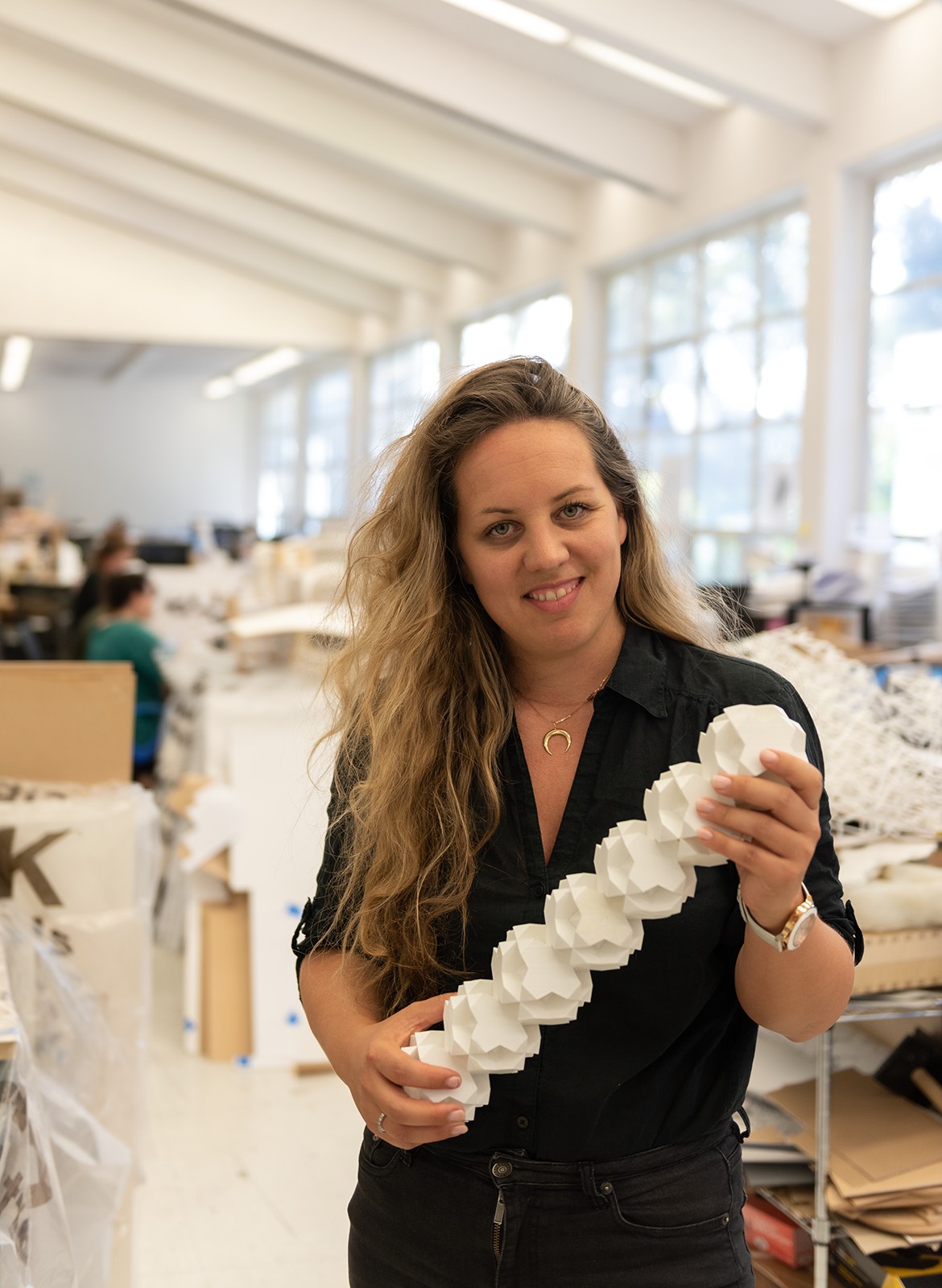UCLA architecture professor uses 3D printing in forward-thinking fashion designs

Julia Koerner incorporated 3D printing and prototyping into her costume design for “Black Panther.” Koerner said she uses the software to teach students about architecture and building design. (Kanishka Mehra/Daily Bruin)
By Tabatha Lewis-Simó
June 2, 2019 11:11 p.m.
This post was updated on June 3 at 6:20 p.m.
Julia Koerner said she sees the human body as a smaller version of a building – fashion sheaths the body much like a facade covers a work of architecture.
The UCLA assistant adjunct professor of architecture said fashion provides an avenue for her to explore her research in architecture on a smaller scale. She said fashion designing provides a more immediate translation from model to output, as opposed to architecture, since it occurs on a much smaller scale.
“Whatever I experience on a smaller scale in fashion design, I look at how I can possibly translate that into a building facade,” Koerner said. “I use it almost like a scale model.”
Koerner said her design process incorporates a variety of digital technologies, including 3D printing and prototyping softwares, used to conduct research. One of her earlier pieces was exhibited in Paris, where she worked with designer Iris van Herpen to create a hard resin dress. Because the dress was like a rigid shell printed in a particular size, they had to find a model that would be able to fit the dress’ exact measurements after it was printed. Since then, Koerner has been exploring more flexible rubberlike materials in her recent work.
“You can use recycled plastics and you can use water bottle filaments to feed the 3D printers,” Koerner said. “So there comes an entirely sustainable aspect – you can melt down your old sweatshirt and 3D-print a new one from the plastic you melted.”
Koerner said 3D-printing fashion pieces is an additive manufacturing process, meaning material is only used as needed. Usually, clothes have to be split into parts before being put together with seams, which often results in wasted material, she said. With 3D printing, the clothes do not require seams and the final product comes out in one piece, so less waste is generated. 3D printing can also aid in creating sustainable fashion by creating durable and recyclable products, leading to fewer clothes being tossed, she said.
Koerner was able to incorporate her 3D-printed fashion into the costume design for the film “Black Panther,” for which she worked on Queen Ramonda’s headdress and shoulder piece. Using 3D-printing technology, Koerner said she tried to emulate the intricately woven pattern of traditional African headdresses and shoulder pieces. Ruth E. Carter, the film’s costume designer, said she gave Koerner African lace, which she scanned into a computer to create 3D models.
Carter said she saw Koerner’s work with van Herpen at a fashion show and was intrigued by the wearable art they created. Because Wakanda is depicted as a nation with advanced technology, Carter said she thought the innovative design process would work well for the film.
“In the apparel world, we work with body form. … (The headdress and shoulder piece were) creating a sculpture piece that could actually add to the structure of the body form,” Carter said.
Utilizing technological advances for design has also become a part of UCLA’s architecture program, said Greg Lynn, an architecture professor. In the program, Lynn said they focus on having students learn to communicate with machines in order to manufacture things, instead of the more traditional route of working with structural engineers to figure out which pieces are physically feasible. Using digital technology and prototyping to design buildings allows students to be able to translate their designs into building parts without an engineer, Lynn said.
While Koerner’s work in fashion is separate from her teaching in architecture, she still manages to integrate her research in both, for example, by studying materials in fashion that could potentially be used in building design.
“(3D printing has) a lot of implications for the future,” Koerner said. “You can design objects and garments which have an aesthetic which cannot be produced with any other method.”

